 And end with, “Therefore, honey, I've left you for my secretary.” Drop that in the mail room, then confirm our flight to Bimini. 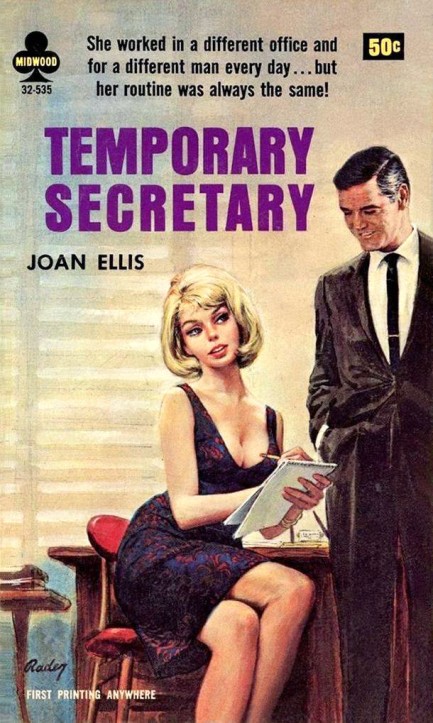
In mid-century sleaze novels every working woman is a bombshell and every employer is tall, dapper, and virile. Paul Rader hits both notes on this cover for Temporary Secretary by Joan Ellis. Rader was an amazing illustrator. The key to this effort is in the angle of the male figure's head. There's no doubt he's aiming his gaze not at the secretary's shorthand pad, but a few degrees to its right. Very well done, copyright 1965.
 The sweetest fruit is the type that peels itself. 
A while back we learned about Dutch illustrator J.H. Moriën through his re-imagining of a famed Paul Rader cover, and here he is again doing good work on the front of Verboden Vruchten, an Erosex-Pocket paperback published in the Netherlands and written by Linda Michaels. We assume that's a pseudonym, but we can't find more info. We stumbled across the cover in a Flickr collection, so thanks to the original uploader. The title translates as “forbidden fruits,” although this particular fruit gets eaten plenty as the story deals with a stripper named Sophie and her various assignations, including with a horny judge named Johnson and an abuser named Leander. We don't know the copyright on this, but Moriën was working in this mode during the mid-1960s. We have other pieces from him that we'll show you later.
Update: We're now thinking this author is Joan Ellis, aka Julie Ellis, who sometimes used Linda Michaels as her pseudonym. After searching everwhere for info, you know where we learned that? Right here.
 She's not the sharpest ho in the toolshed. 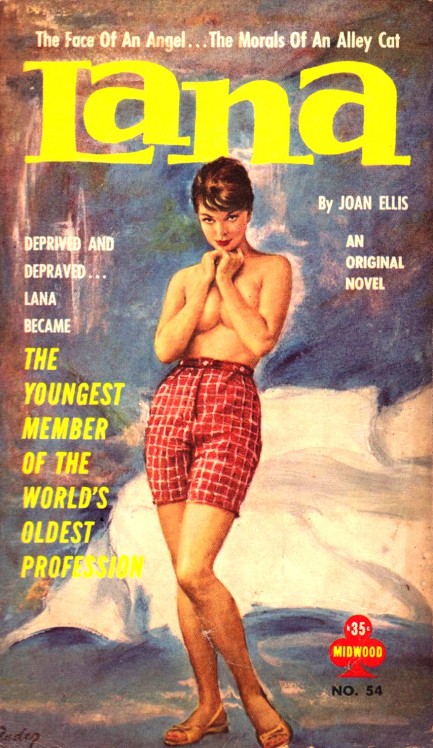 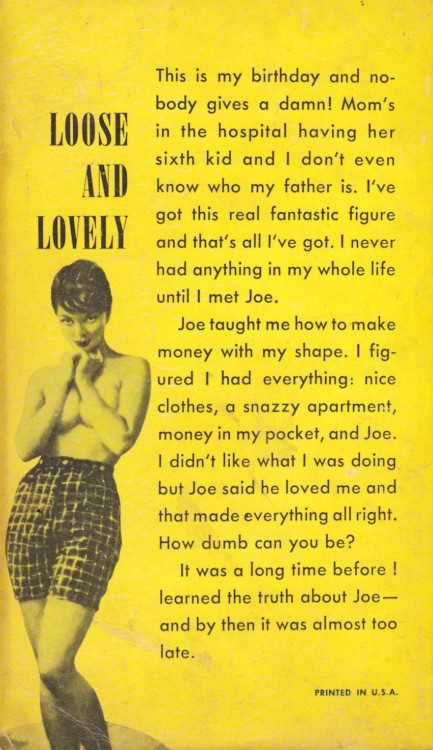
Lana, by Joan Ellis, is sleaze fiction about a fifteen-year-old girl with poor critical reasoning skills. Which is to say she's D-U-M. Basically, she falls for an older guy who pimps her out. Her rationalizations around this are hilarious. Prostitutes often form co-dependent bonds with their pimps, so we hear, but Ellis didn't handle that aspect with sufficient skill, instead making poor Lana flat-out superficial. But hey—it's a sleaze novel. You don't go into it expecting Les Miserables. This is copyright 1960 with Paul Rader cover art (of a figure that looks a lot like Elsa Martinelli). By the way, if for some reason you don't know the term “ho,” look here.
 Actually, I'm not nicknamed Flame because of my hair. You know what pyroflatulence is? Toss me that lighter. 
Above, another great Midwood cover, this time for Flame, by sleaze stalwart Joan Ellis, aka Julie Ellis. The art is, sadly, uncredited (but looks like Paul Rader).
 Once you go down there's no turning back. 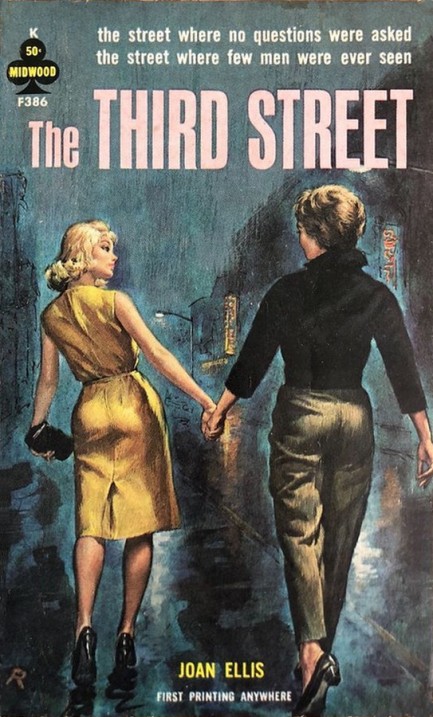
But isn't Third Street in the other direction? We're gonna go down the third street. You mean the third street from here? If you wanna think of it that way. Why are you holding my hand? The third street gets slippery. You'll see.
Super rare Joan Ellis authored Midwood-Tower lesbian sleaze novel about a painter and model who come together over more than just art, 1964, with Paul Rader on the cover chores.
 Well, you know. I'm reluctant to stop, maybe. 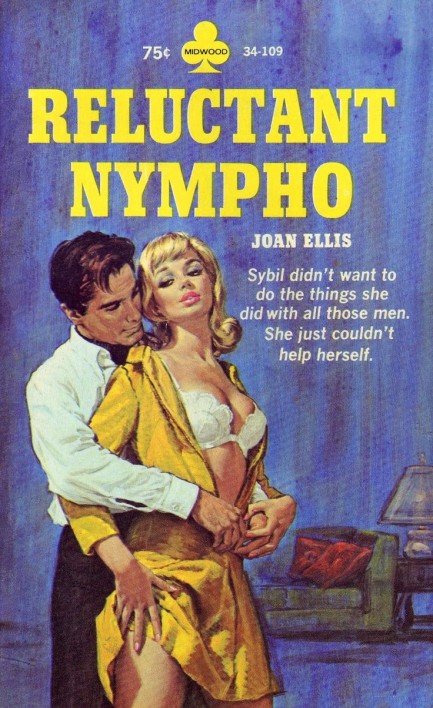
Above, just another brilliant effort from illustrator Paul Rader, this time for The Reluctant Nympho by Joan Ellis, 1968.
 Vice so nice they did it thrice. 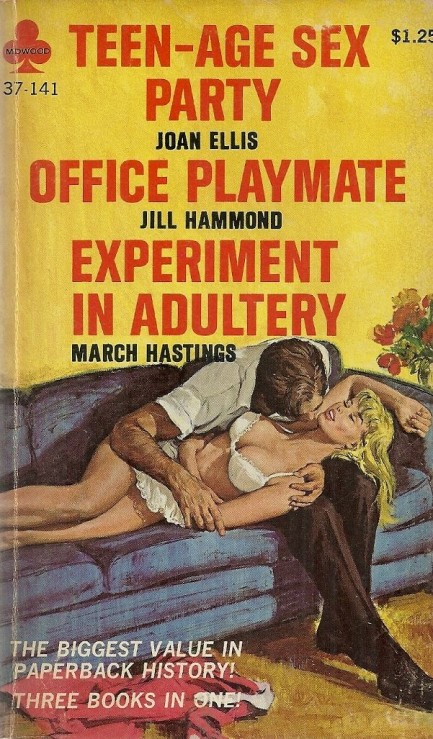
Above, a cover for a rare triple novel featuring the sleaze work of Joan Ellis, Jill Hammond, and March Hastings. We like how the stories cover three different stages of life—Teen-Age Sex Party is high school, Office Playmate is the working world, and Experiment in Adultery is married life. A follow-up triple included Middle-Aged Miscreants, Retired but Desired, and One Dick in the Grave. Well, not really. But we missed our calling, don't you think? The cover art here is from Paul Rader, and the copyright is 1968.
 These are people who definitely pay attention to the poles. 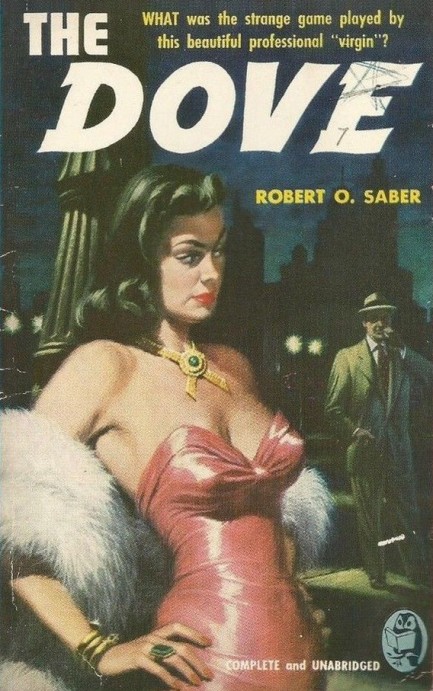
When you look at lots of paperbacks sometimes a common thread suddenly jumps out at you that went unnoticed before. Such was the case a few weeks ago when we noticed the large number of characters on mid-century covers leaning against poles—light poles, telephone poles, sign poles, etc. We suggested someone should put together a collection, but of course we really meant us, so today you see above and below various characters deftly using these features of the urban streetscape as accessories. Art is from Benedetto Caroselli, Harry Schaare, George Gross, Rudolph Belarski, James Avati, et al. You can see a couple more examples here and here. 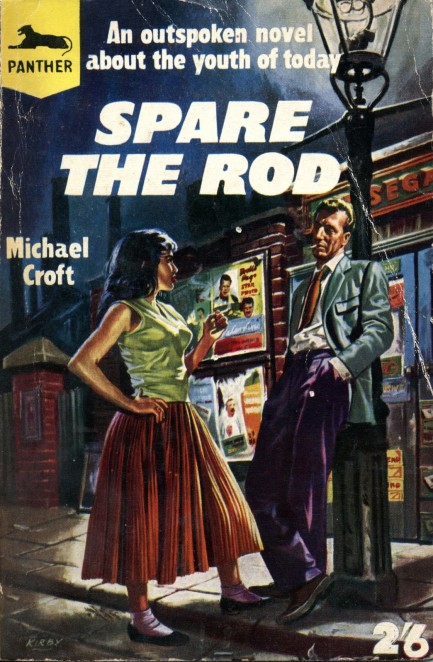 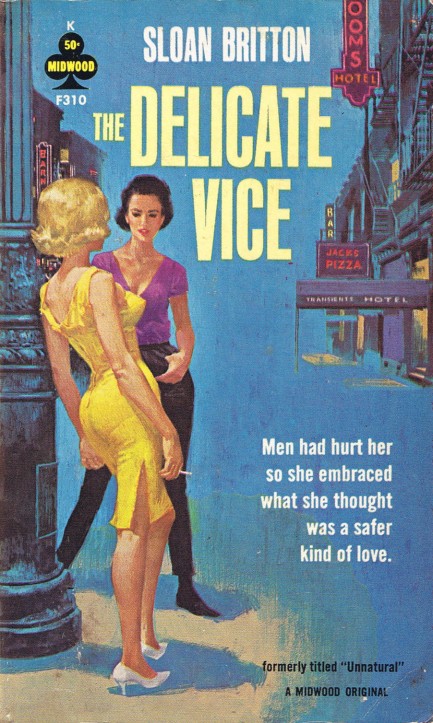  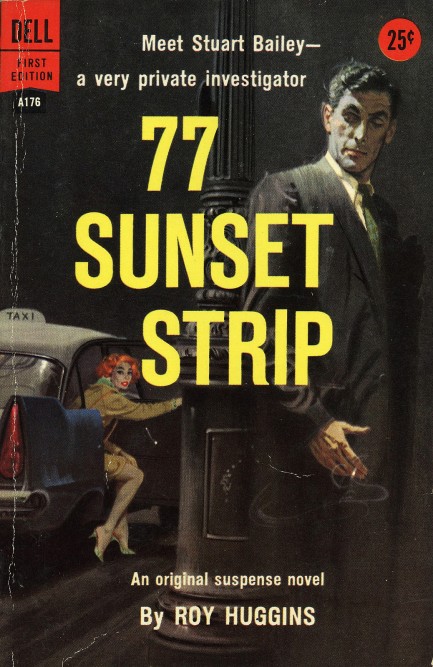 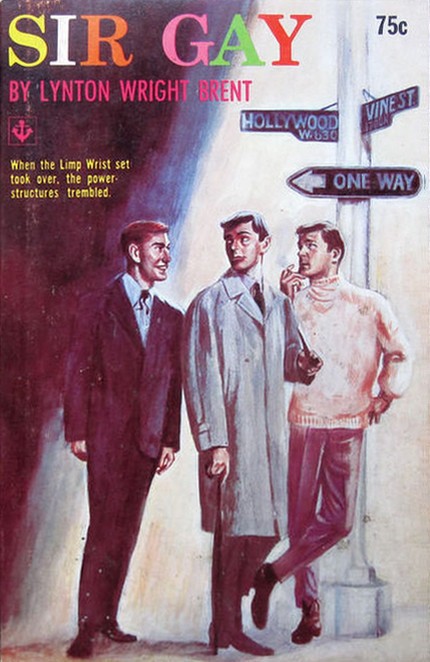 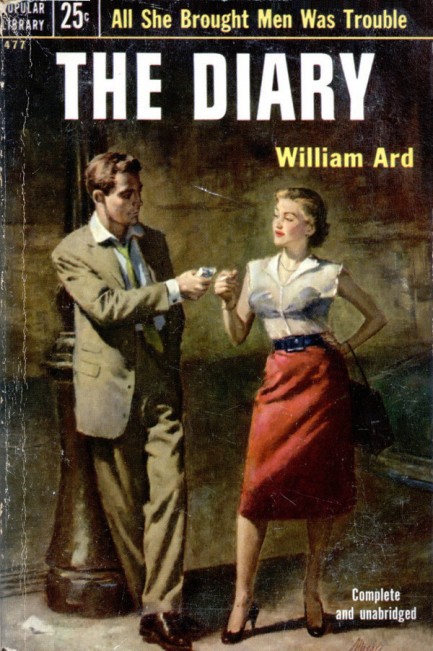 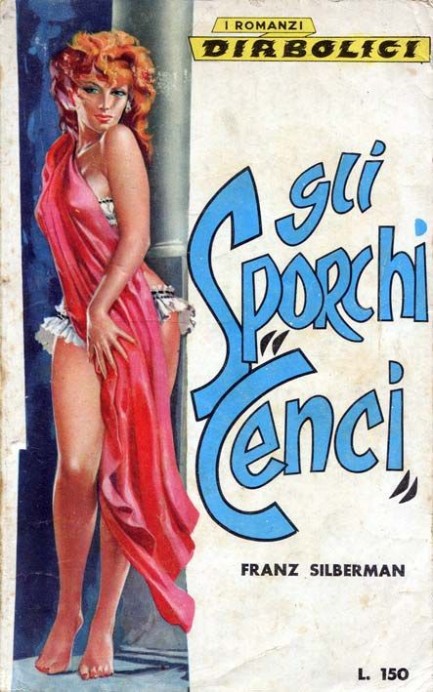 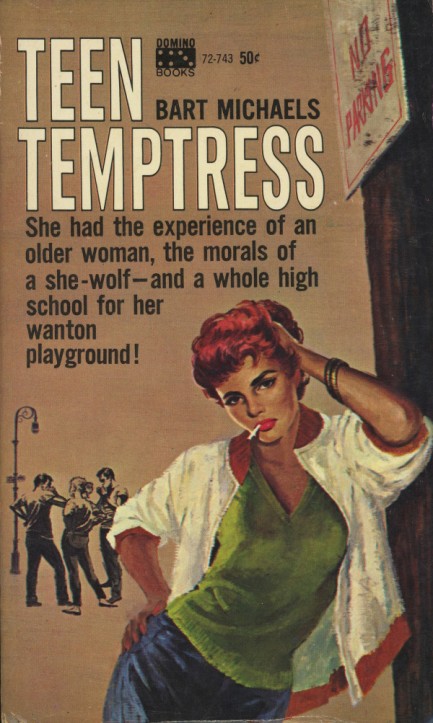 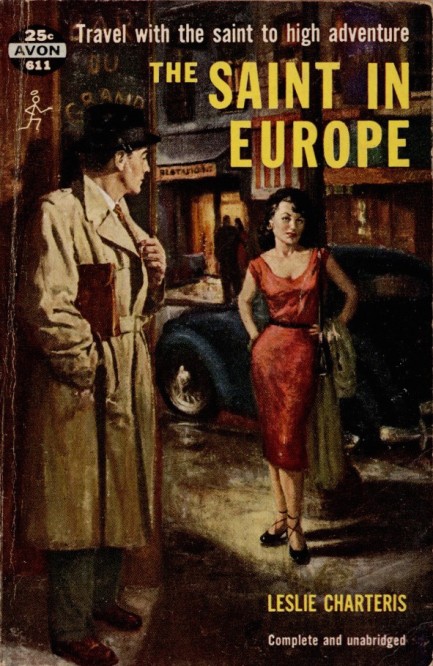 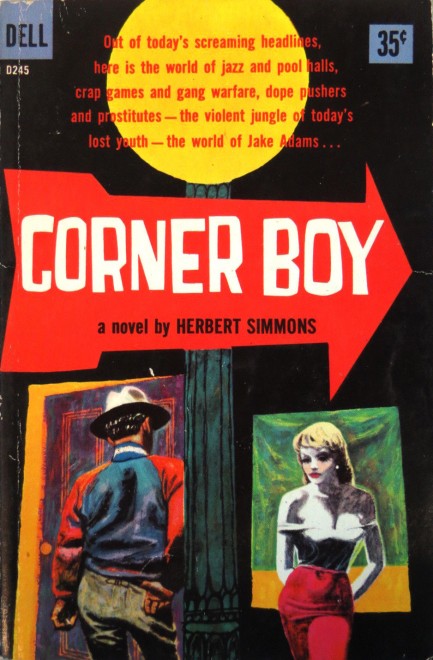 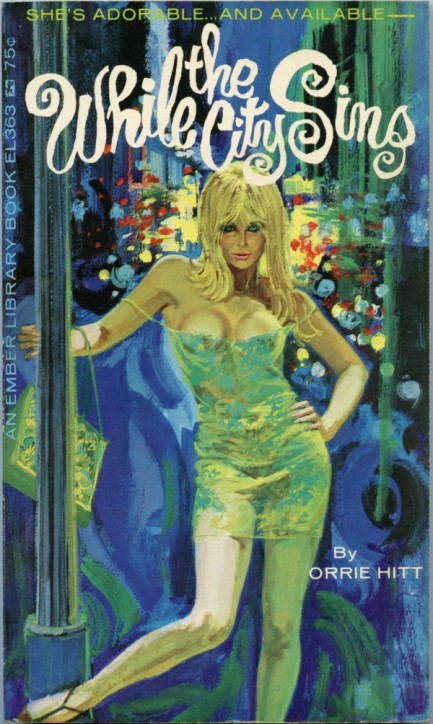 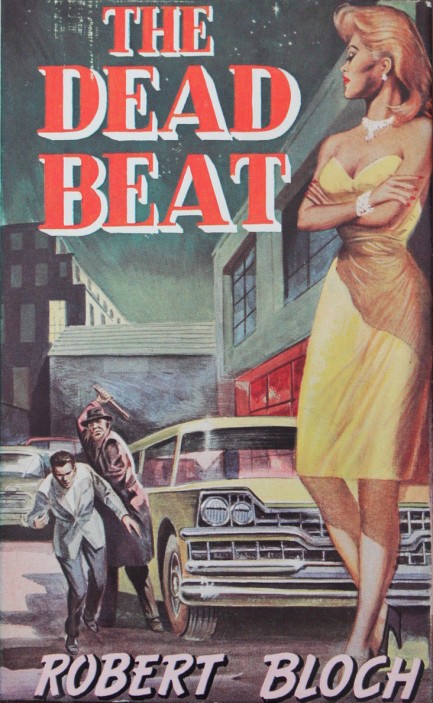 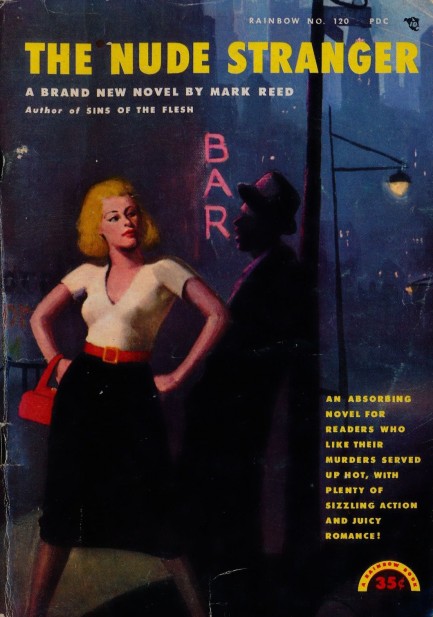 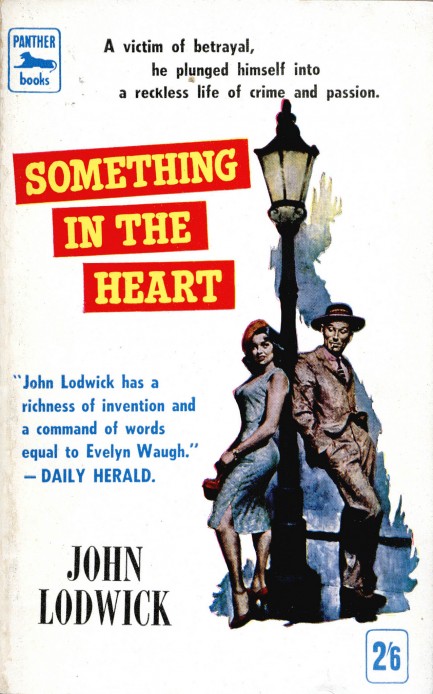 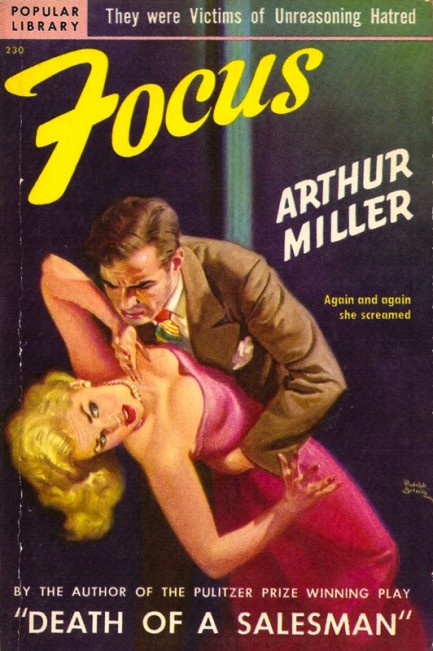 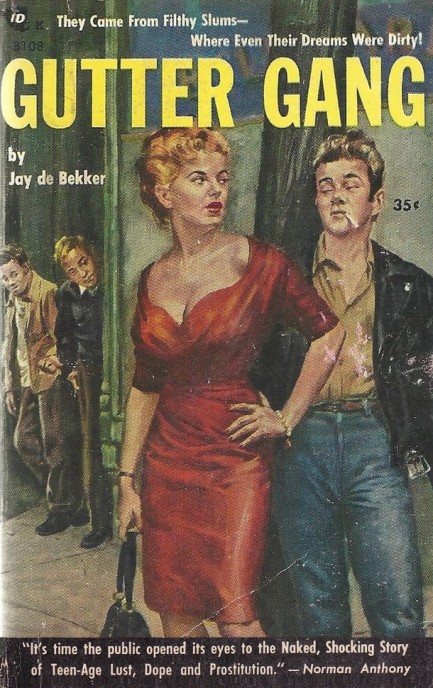 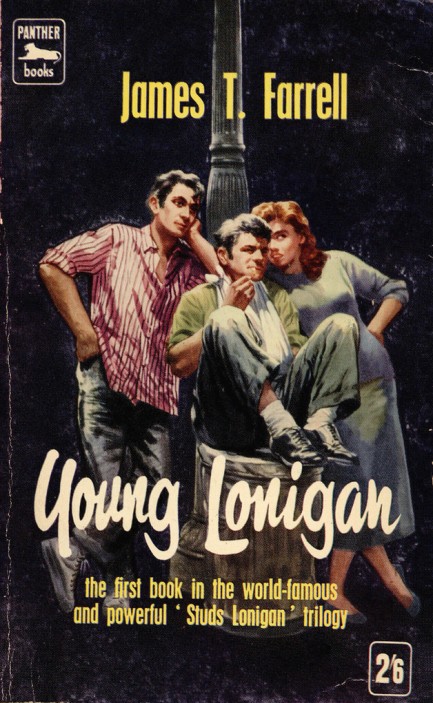 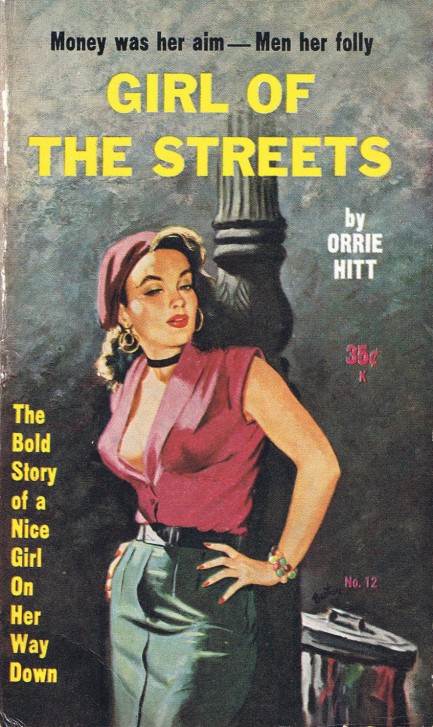 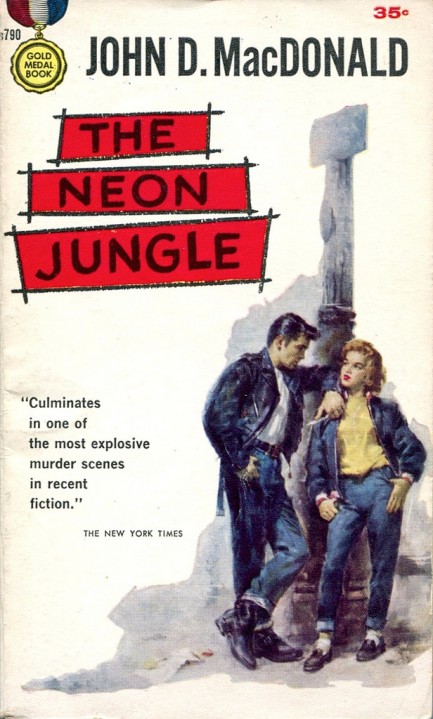 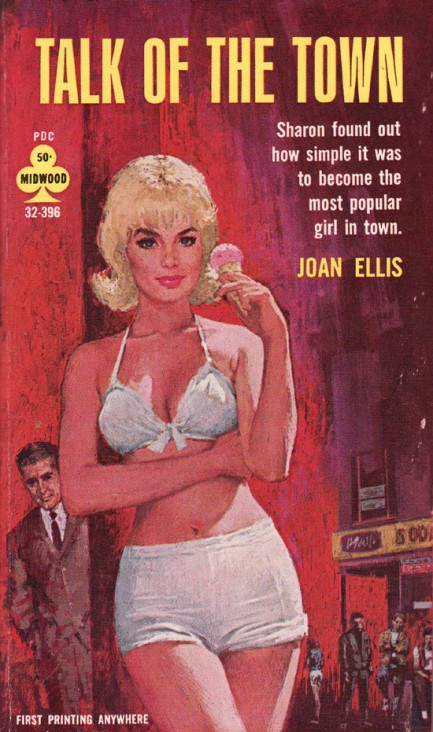 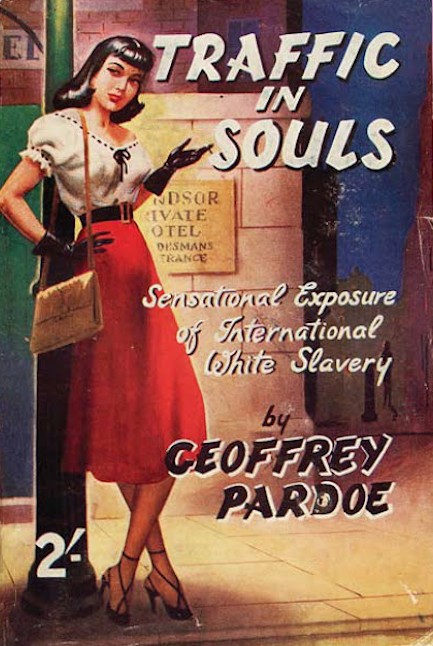 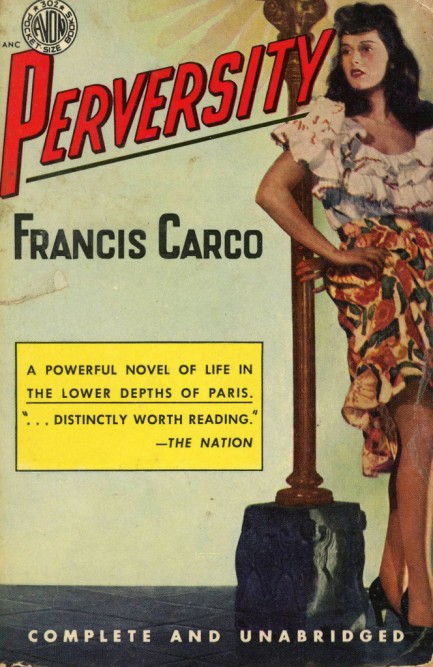  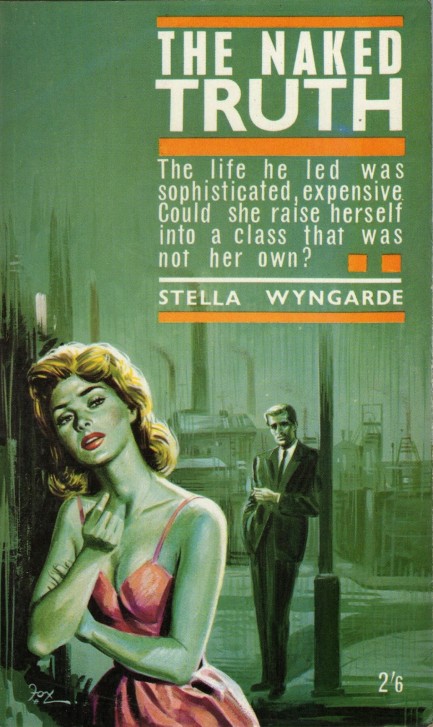  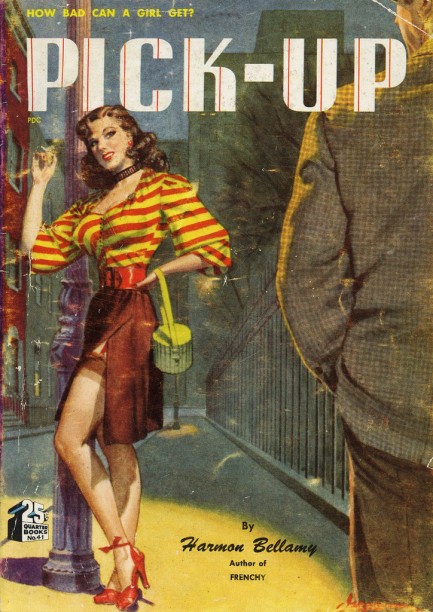
 When girl meets girl sparks fly. 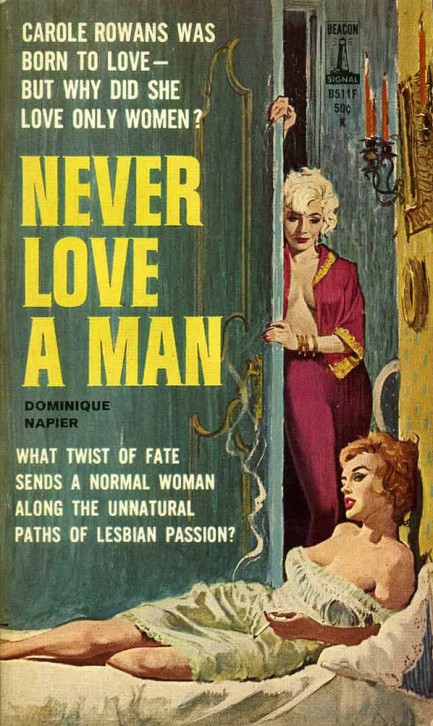
Above and below is a small percentage of some of the thousands of lesbian themed paperback covers that appeared during the mid-century period, with art by Paul Rader, Fred Fixler, Harry Schaare, Rudy Nappi, Charles Copeland, and others, as well as a few interesting photographed fronts. The collection ends with the classic Satan Was a Lesbian, which you’ve probably seen before, but which no collection like this is complete without. Hopefully most of the others will be new to you. Needless to say, almost all were written by men, and in that sense are really hetero books reflecting hetero fantasies (fueled by hetero misconceptions and slander). You can see plenty more in this vein on the website Strange Sisters. 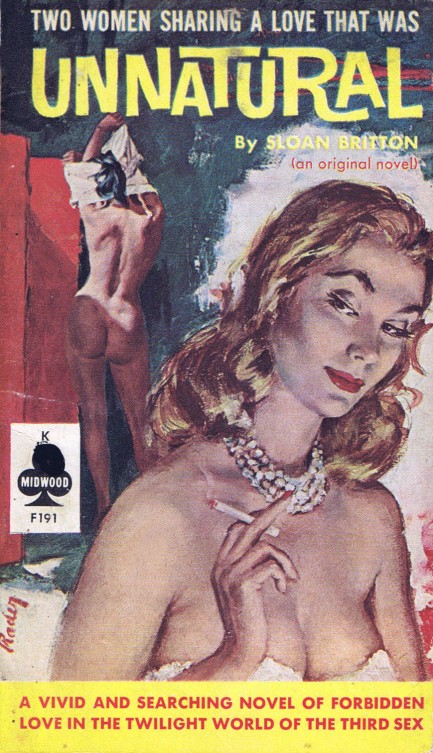 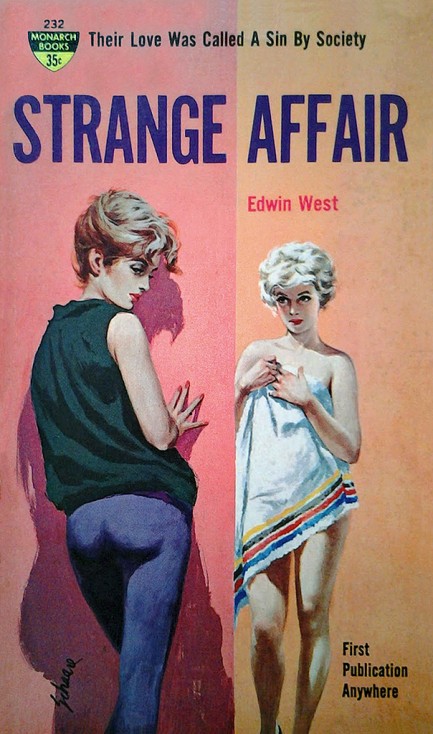 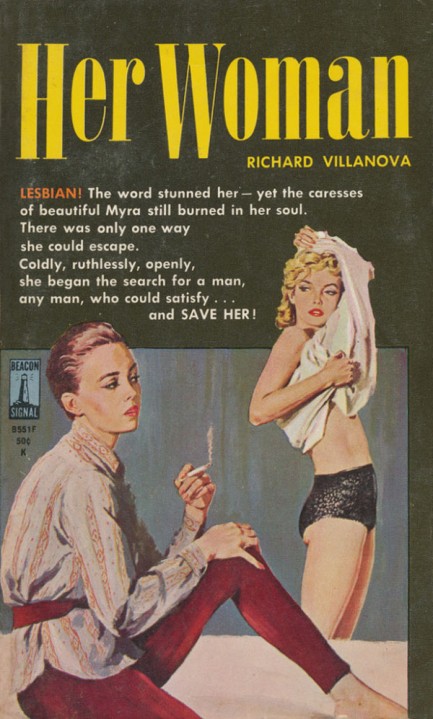 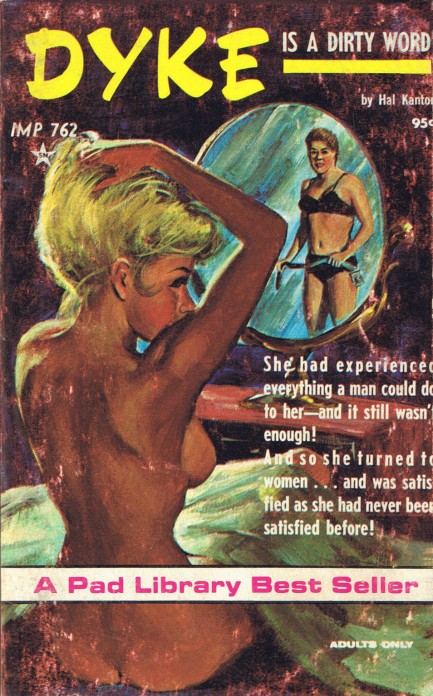 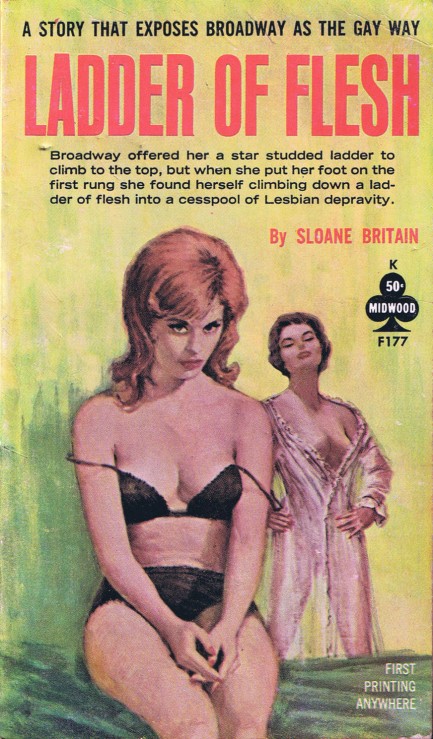  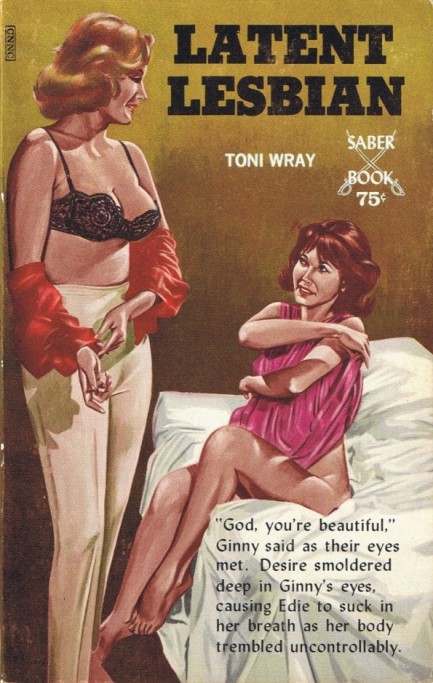 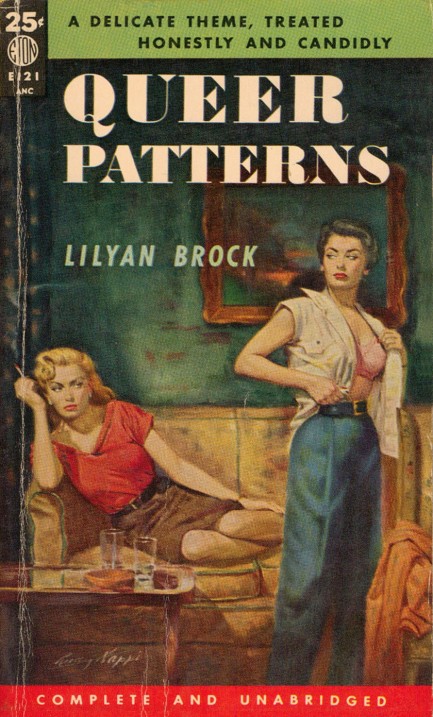 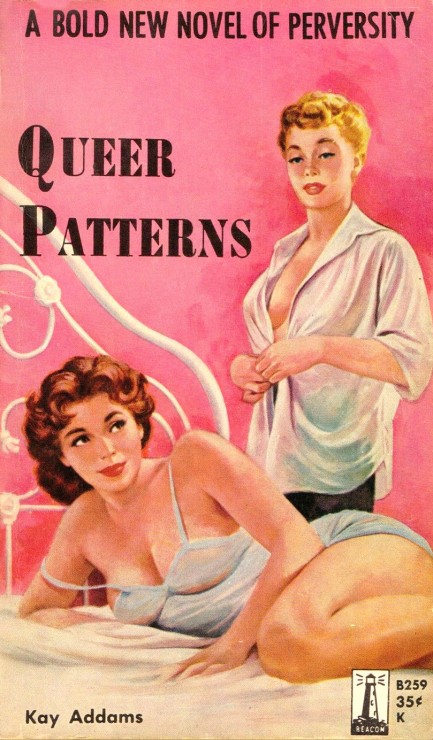 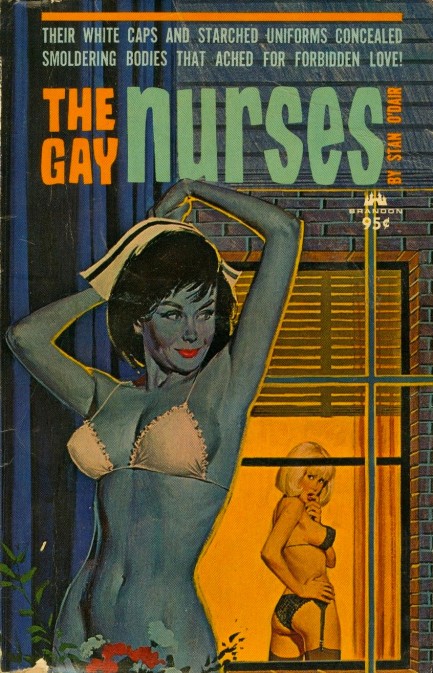 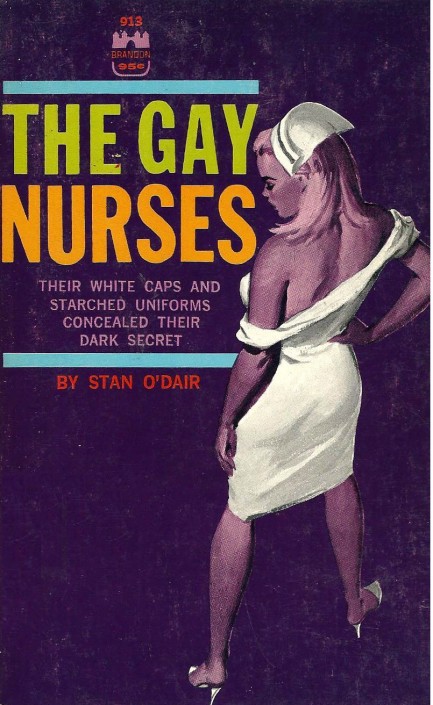 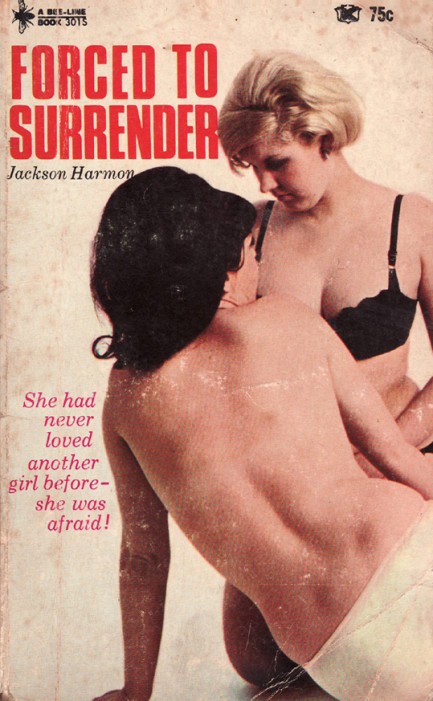 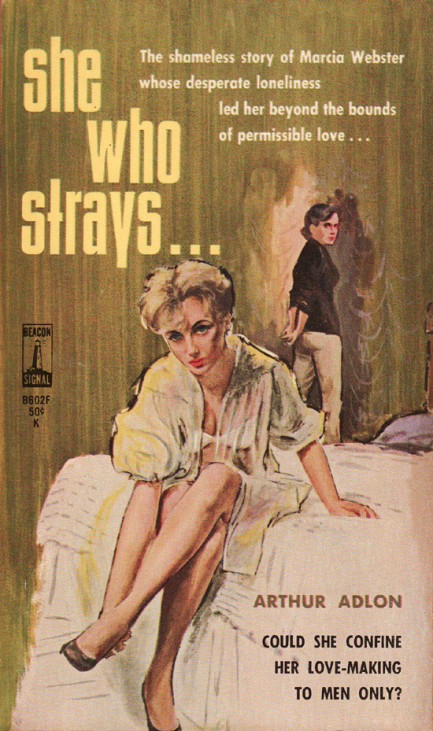 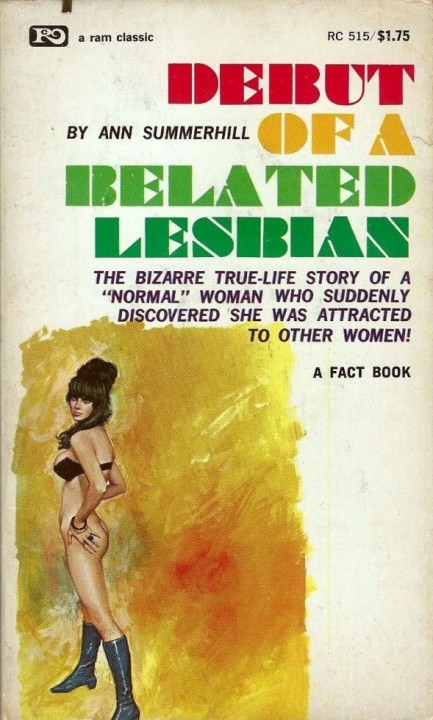 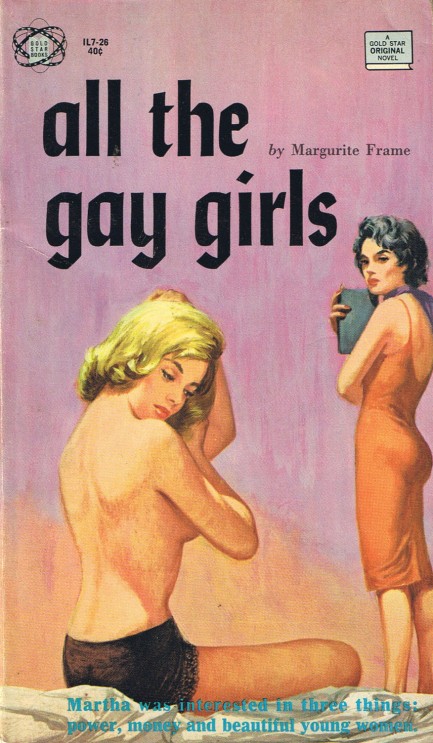  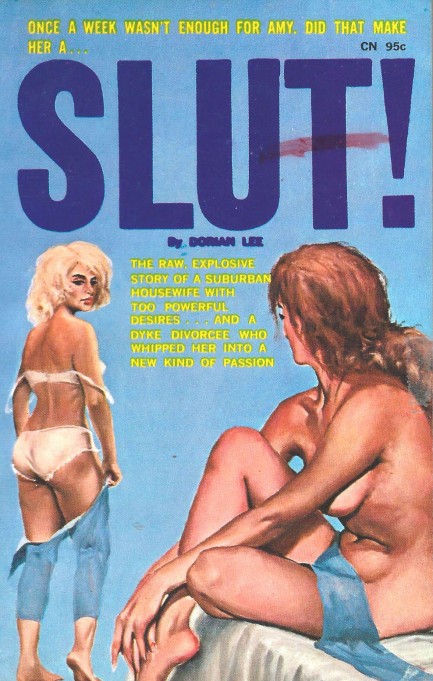  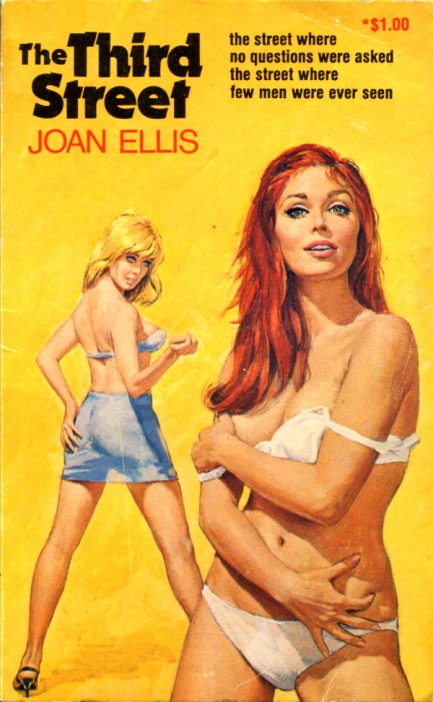 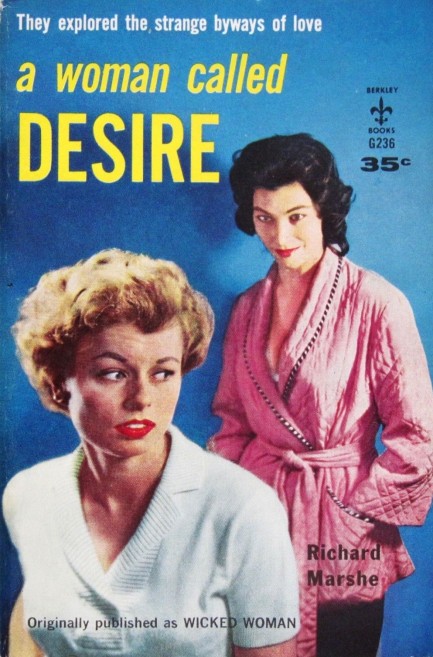 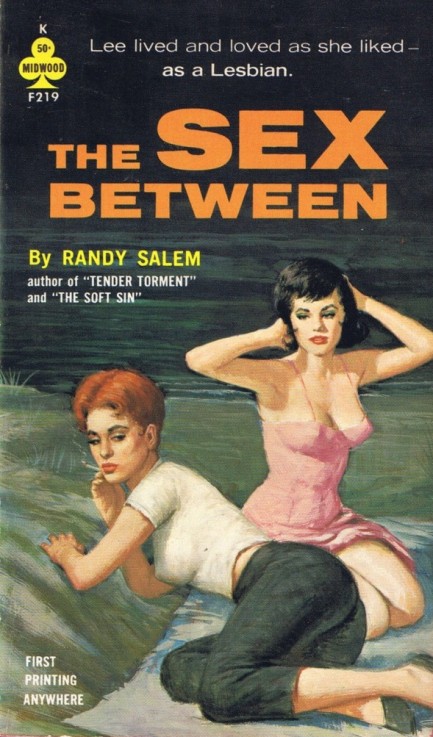 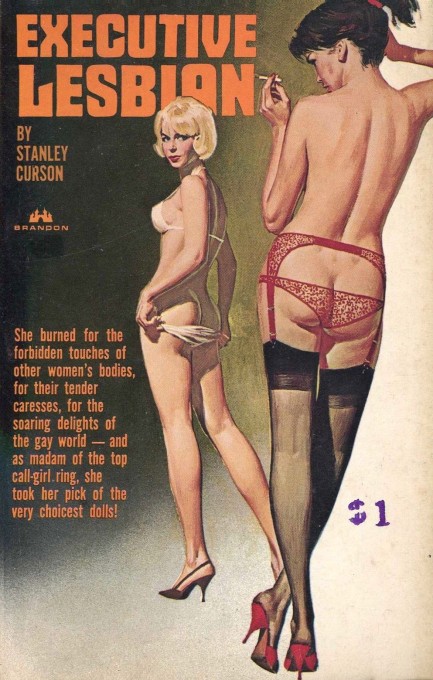 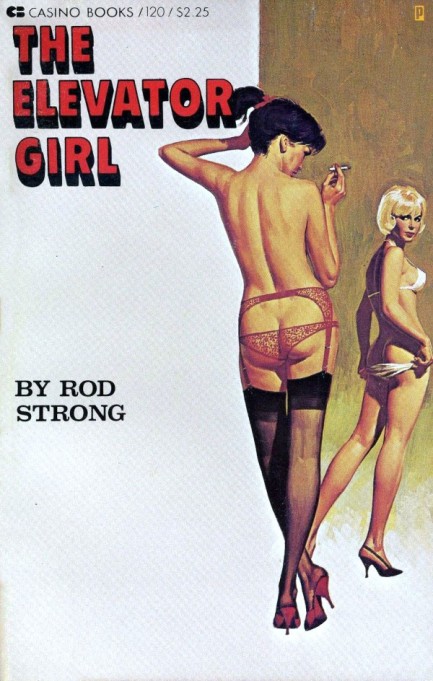 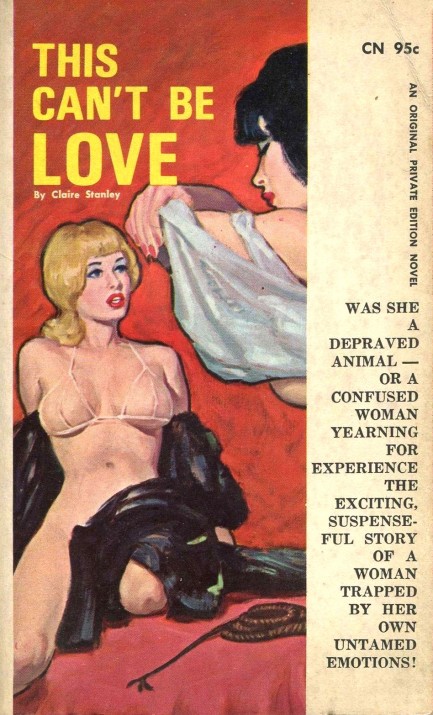 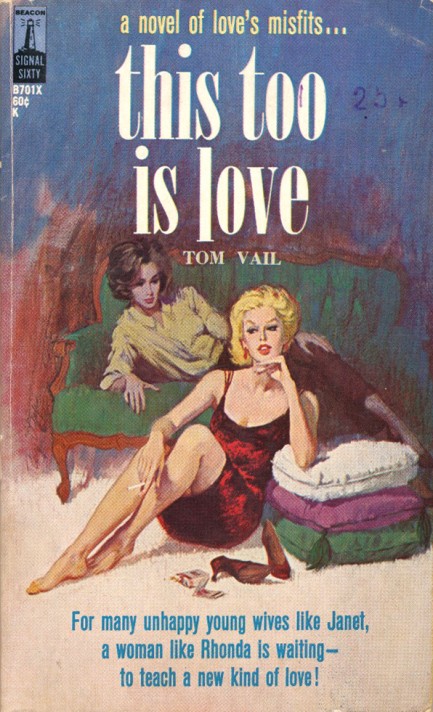 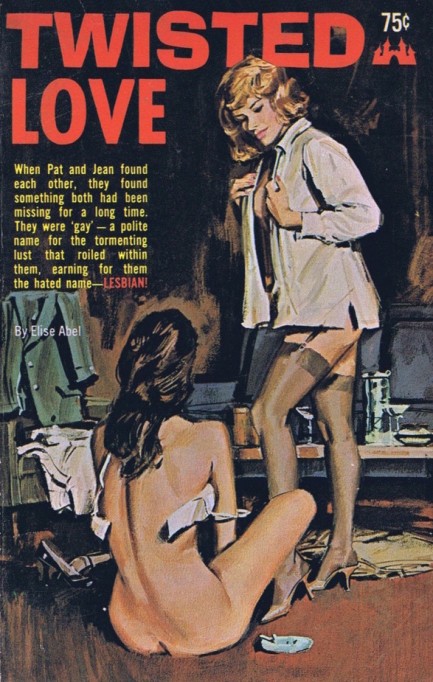 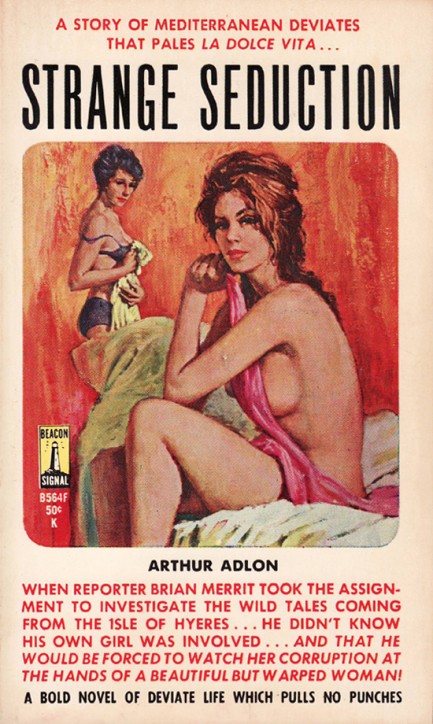 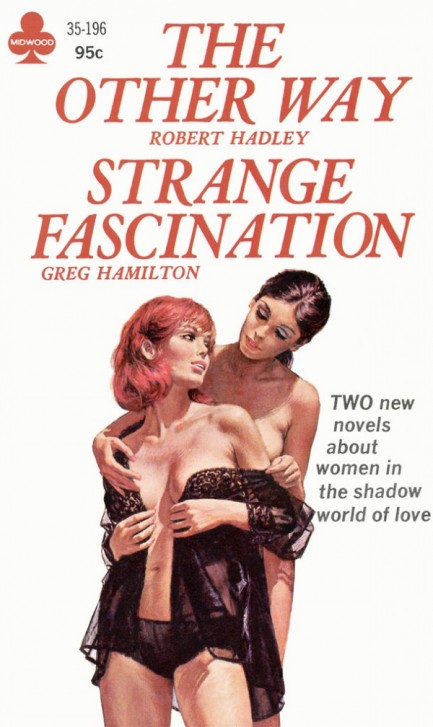 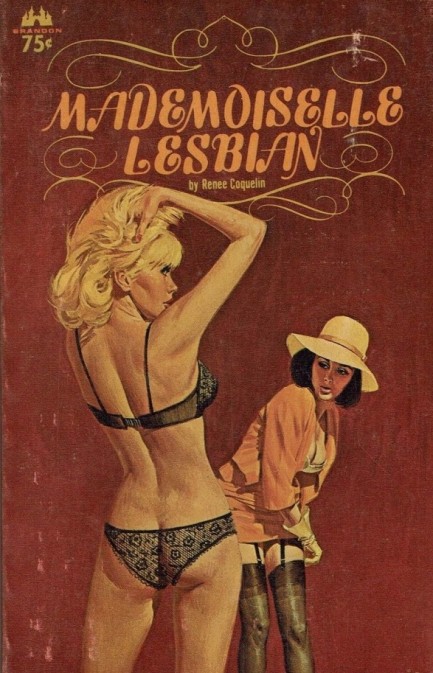   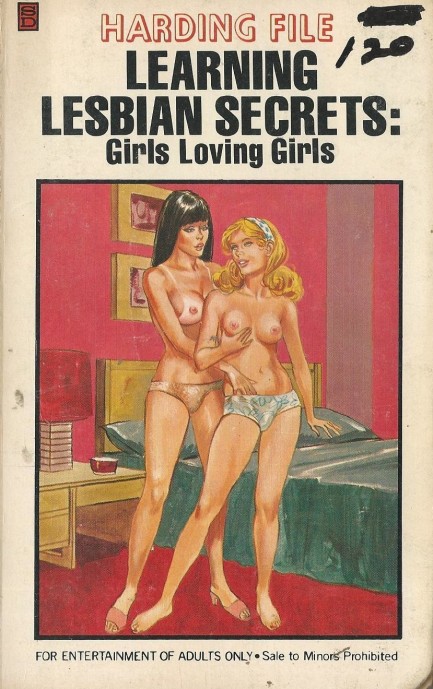 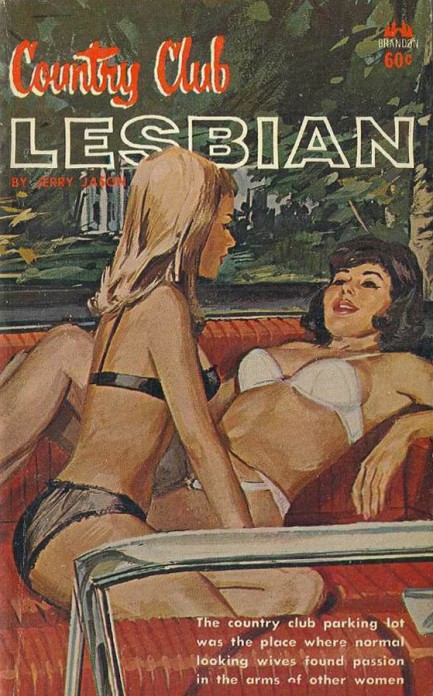  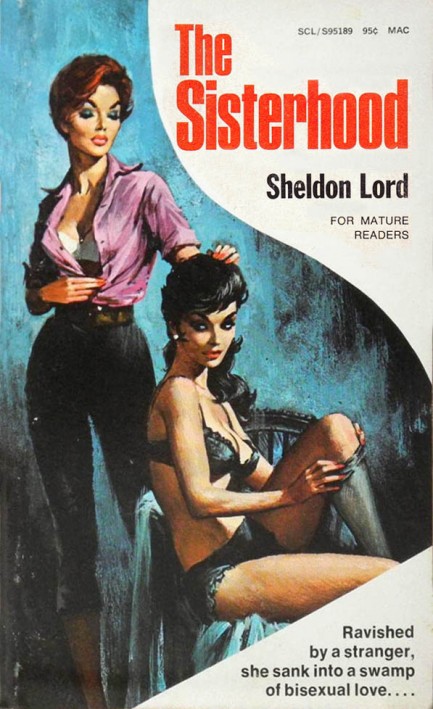 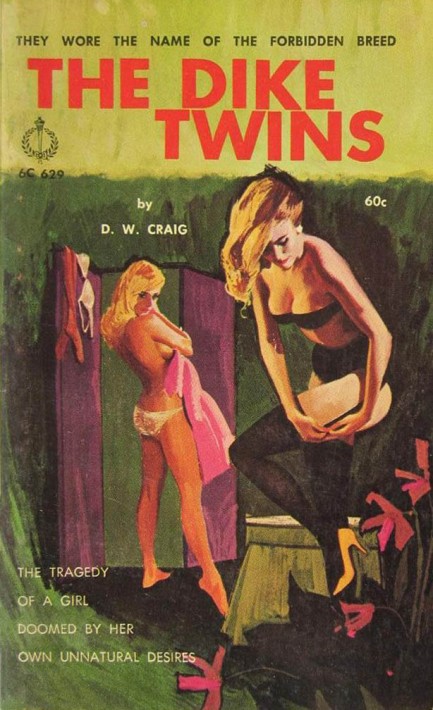 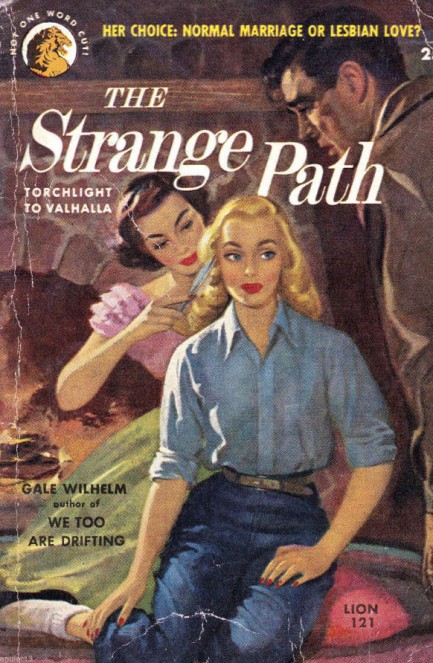 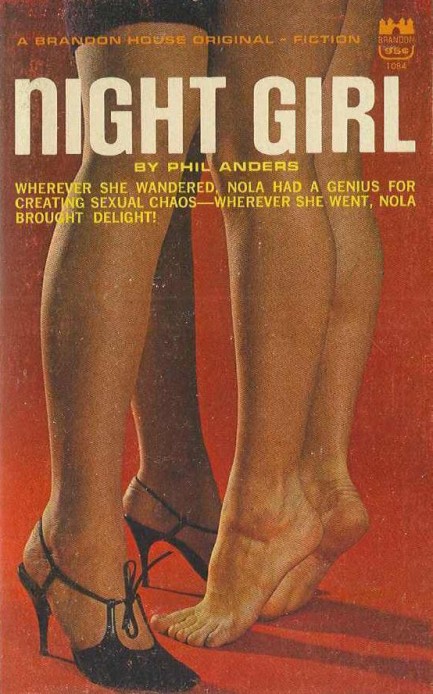 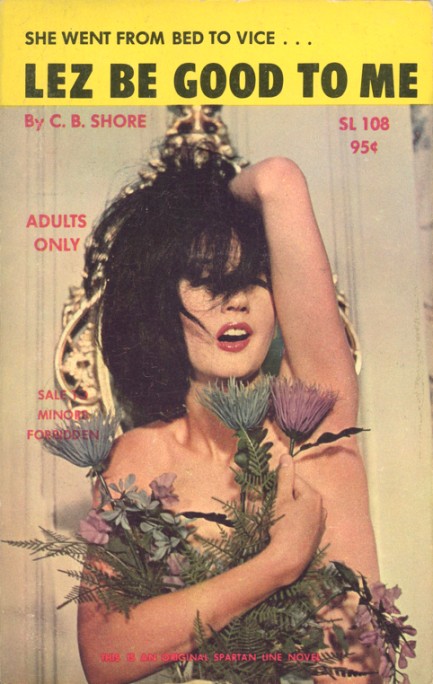 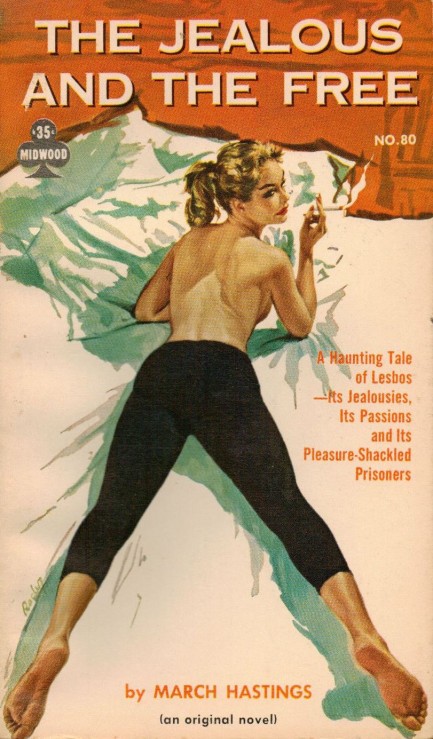  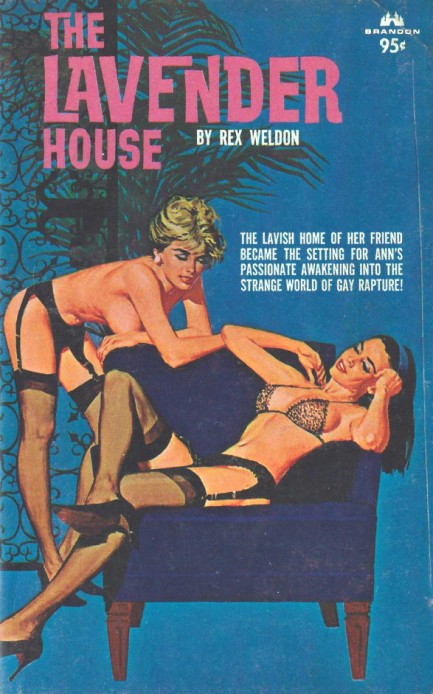 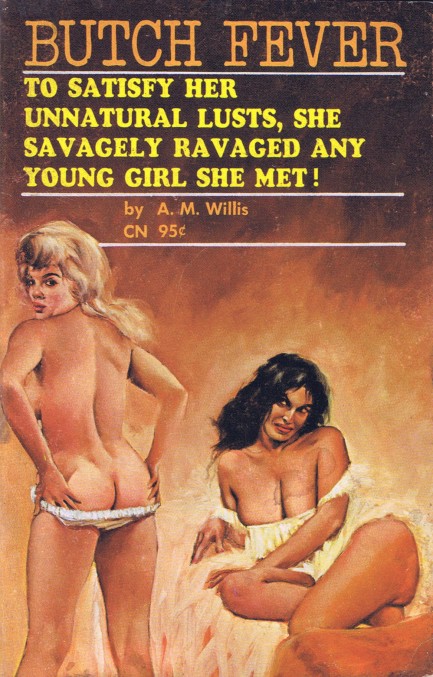 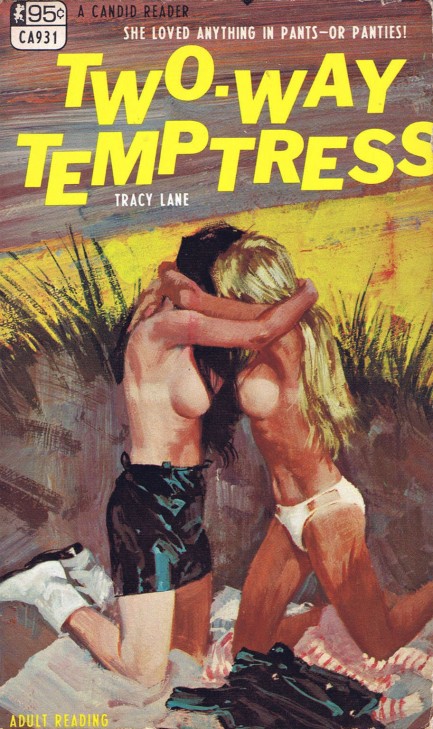 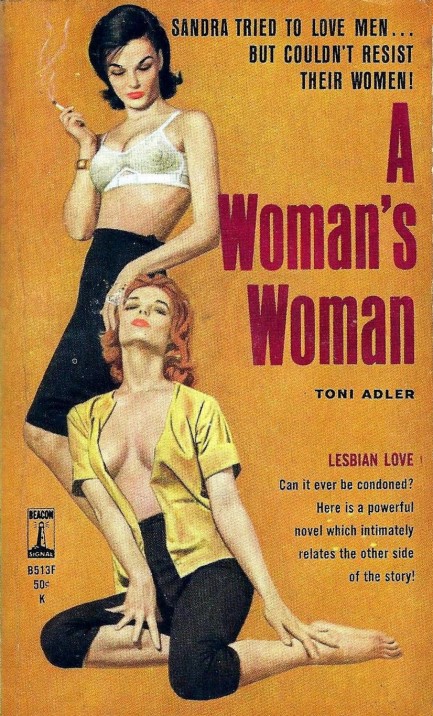 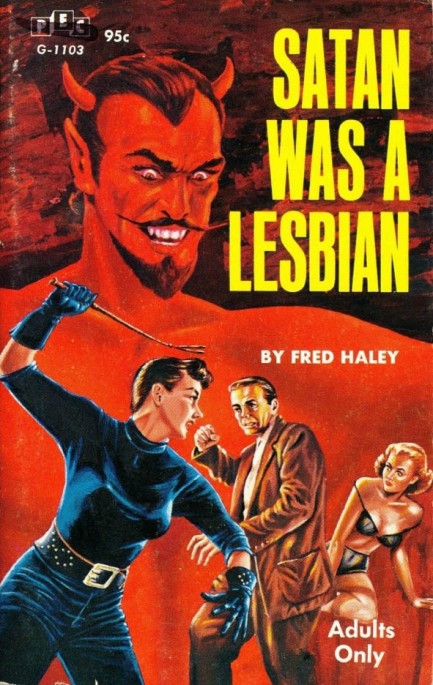
 The shape of bad things to come. 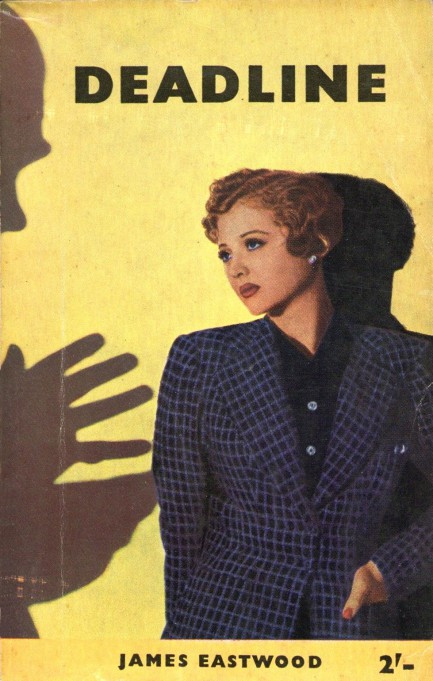
Above and below are assorted covers featuring yet another fun mid-century paperback art motif—the looming or threatening shadow. The covers are by the usual suspects—Rader, Phillips, Gross, Caroselli, Nik, as well as by artists whose work you see less often, such as Tony Carter’s brilliant cover for And Turned to Clay. That's actually a dust jacket, rather than a paperback front, but we couldn't leave it out. You’ll also notice French publishers really liked this theme. We’ll doubtless come across more, and as we do we’ll add to the collection. This is true of all our cover collections. For instance, our post featuring the Eiffel Tower has grown from fifteen to twenty-two examples, and our group of fronts with syringes has swelled from thirteen to twenty-six images. We have twenty-four twenty-six—see what we mean?—more shadow covers below, and thanks to all original uploaders.
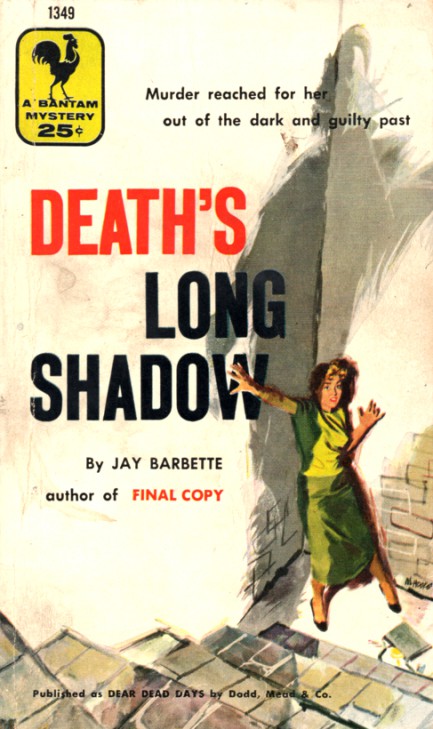 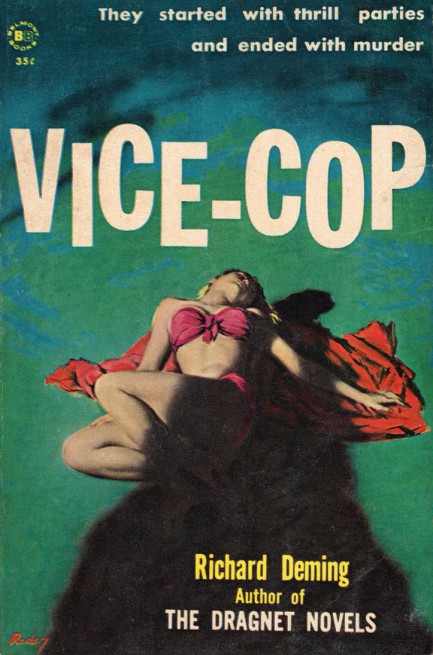 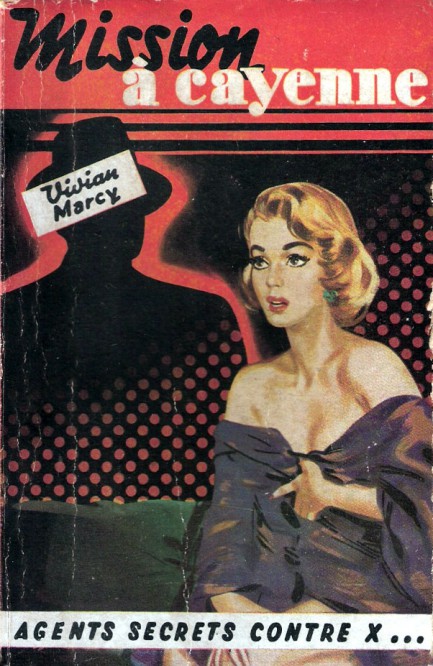 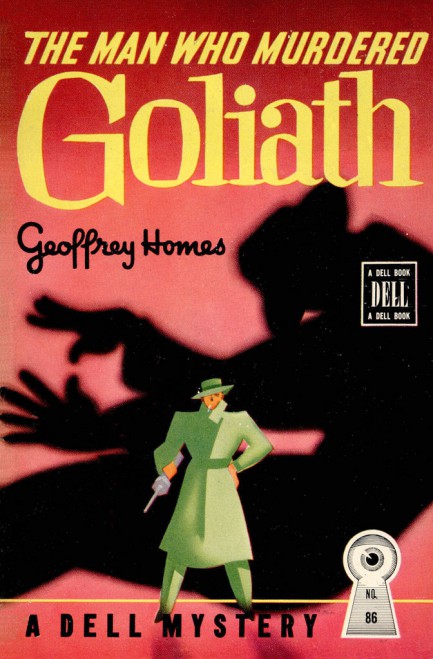 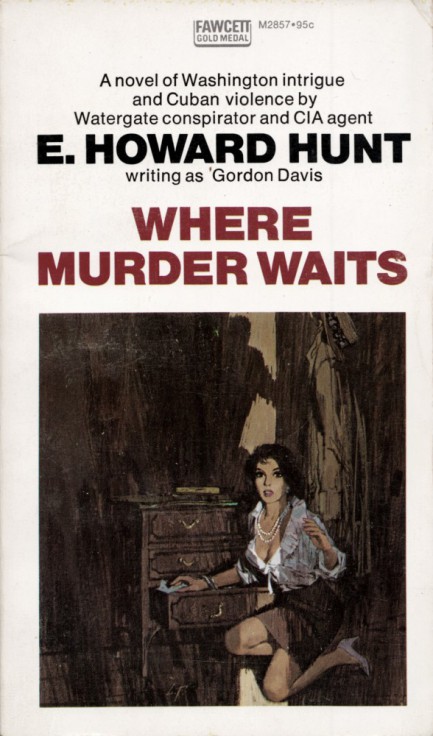 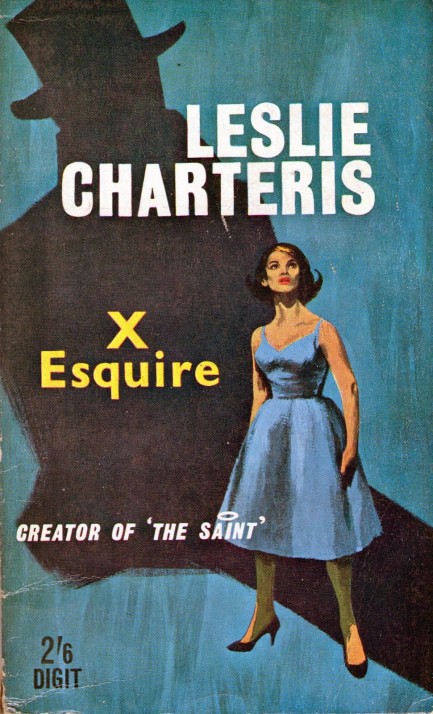 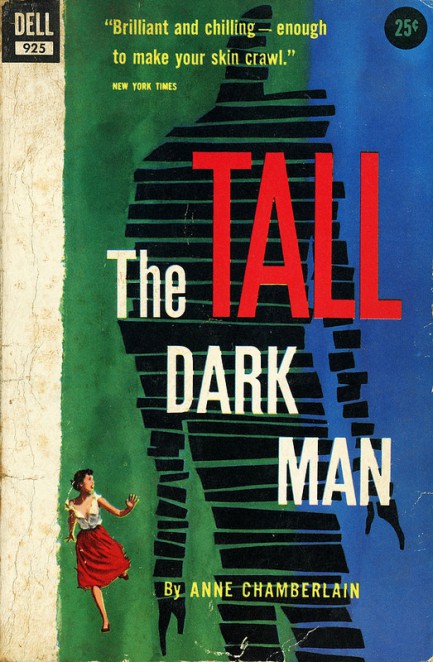 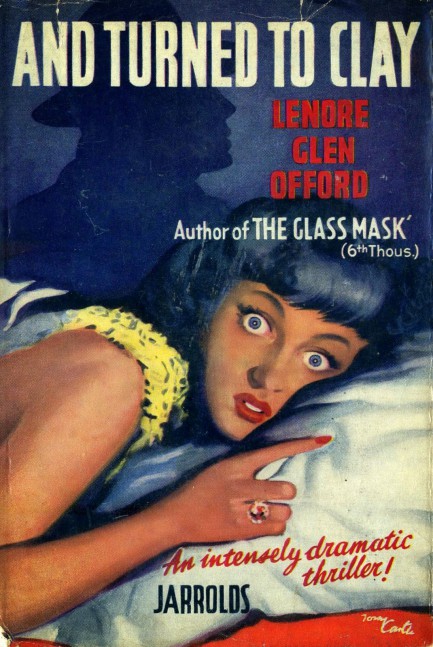 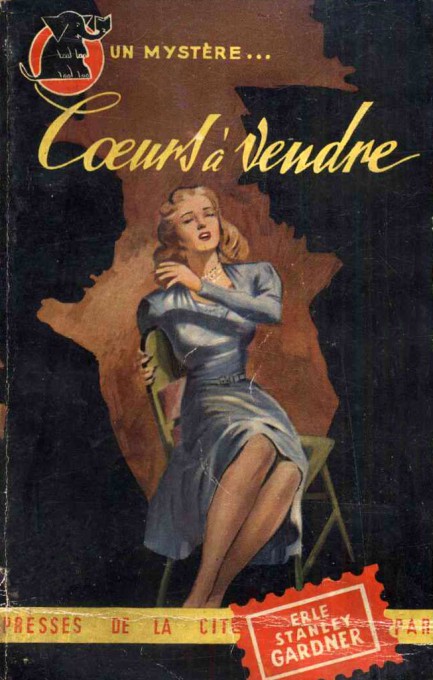 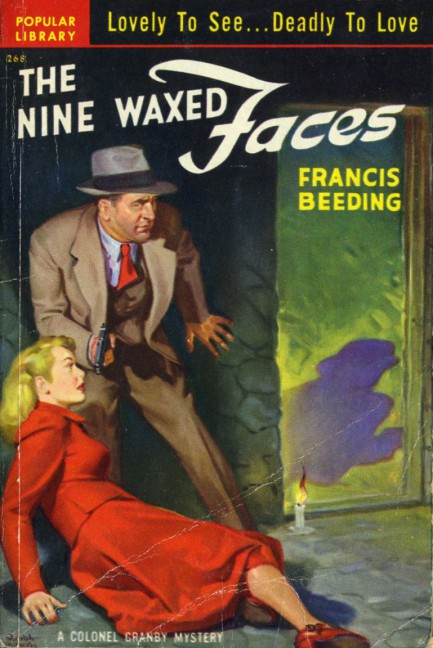 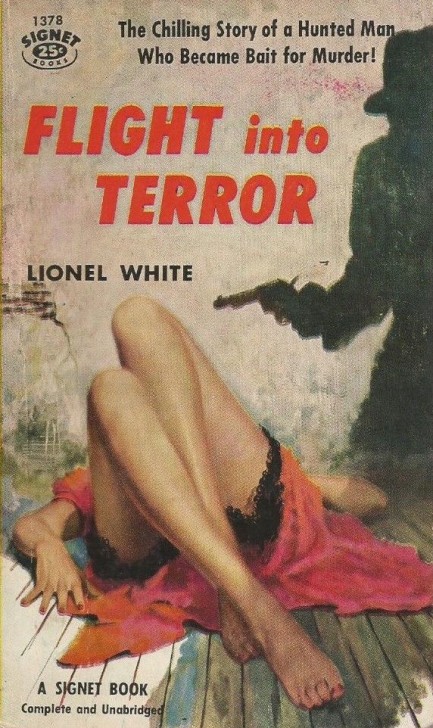  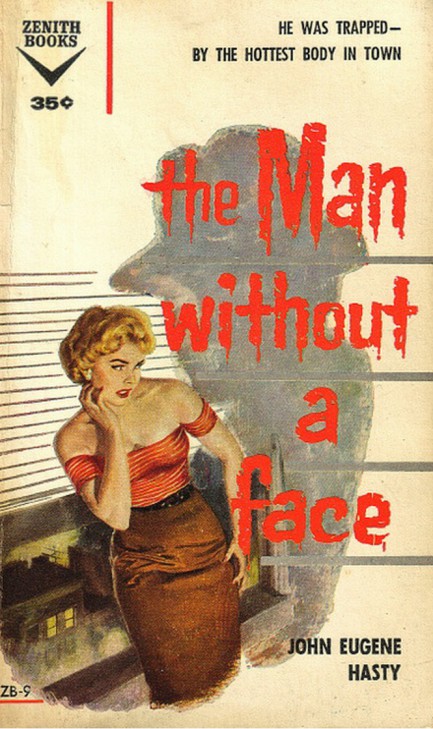 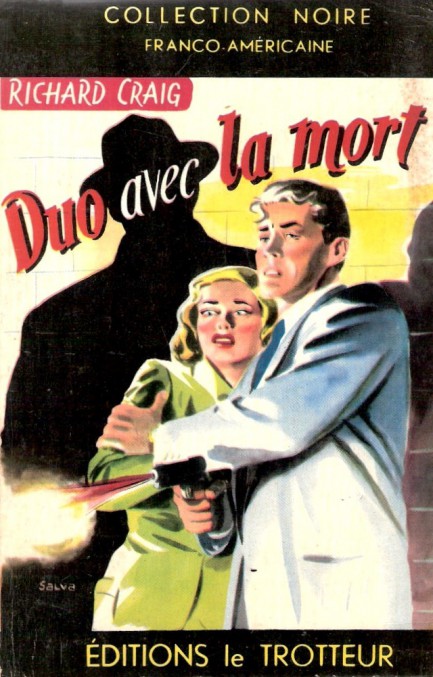 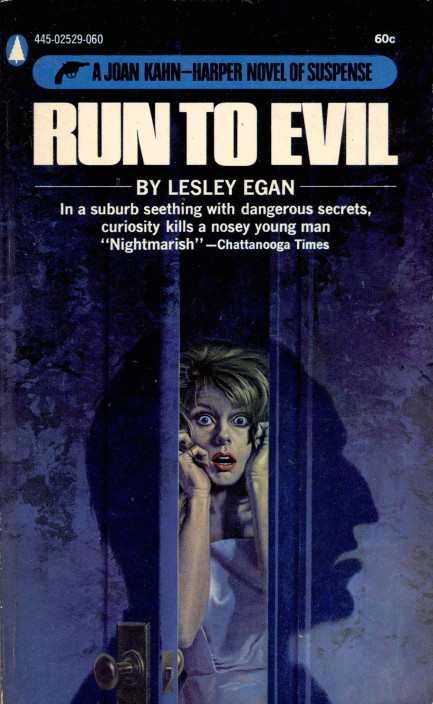 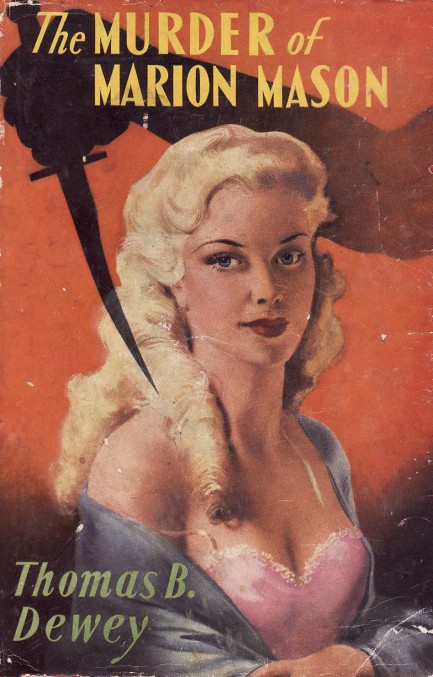 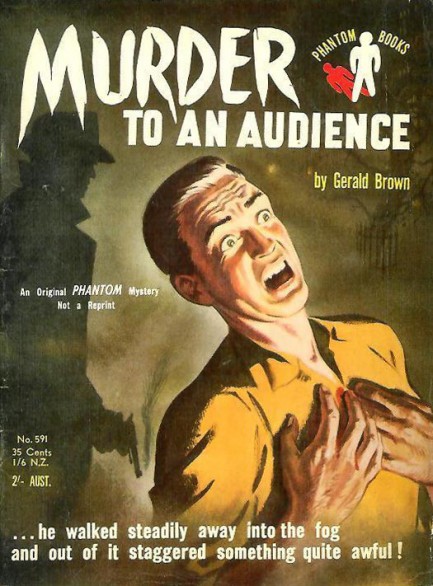  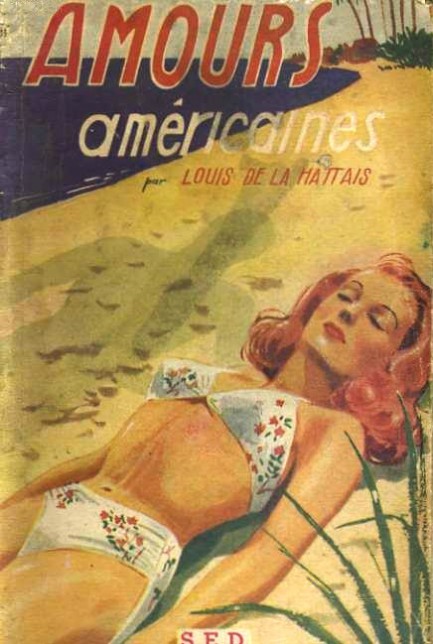  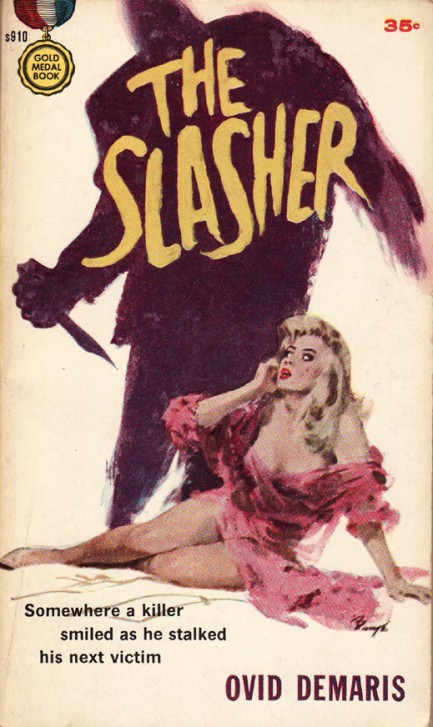   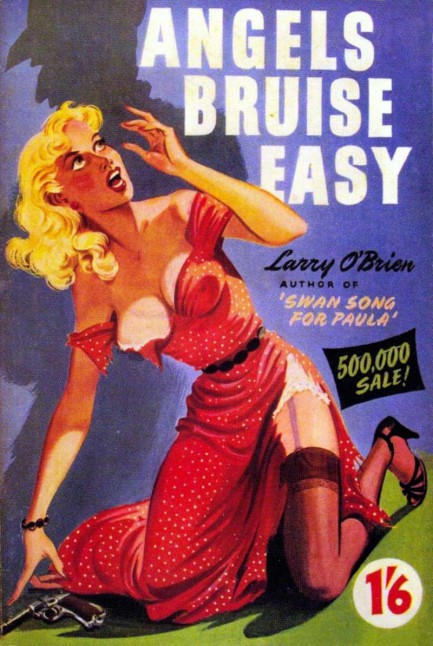 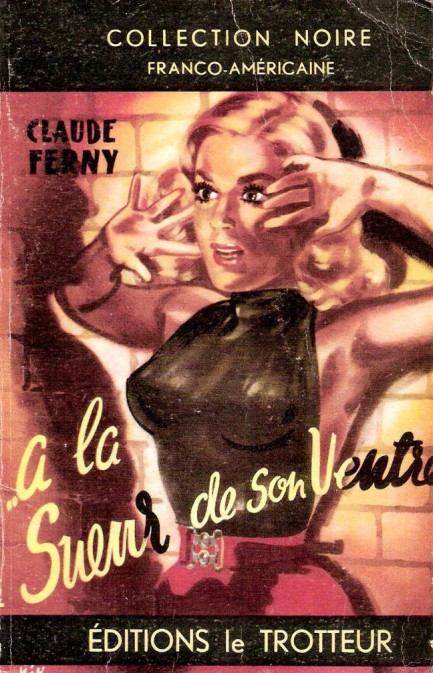 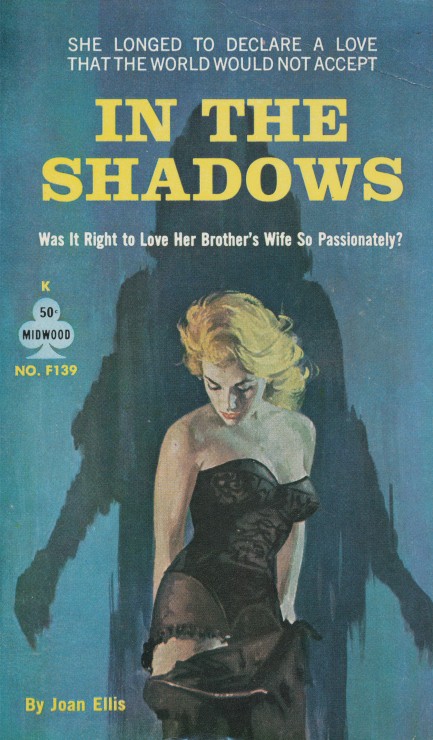 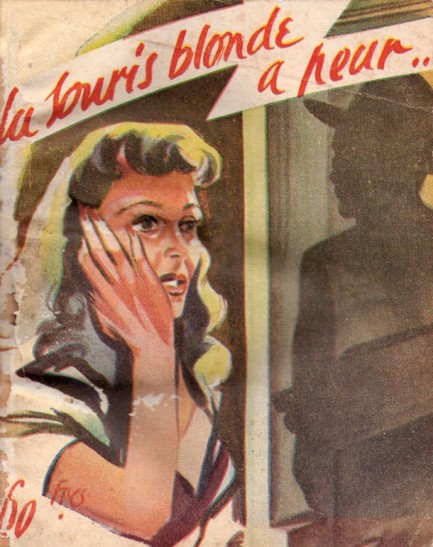 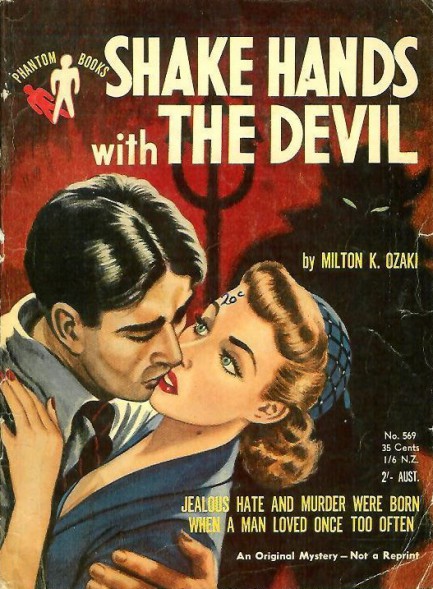 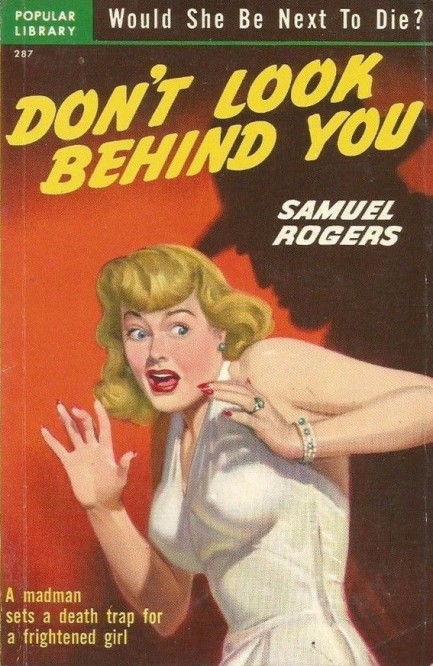 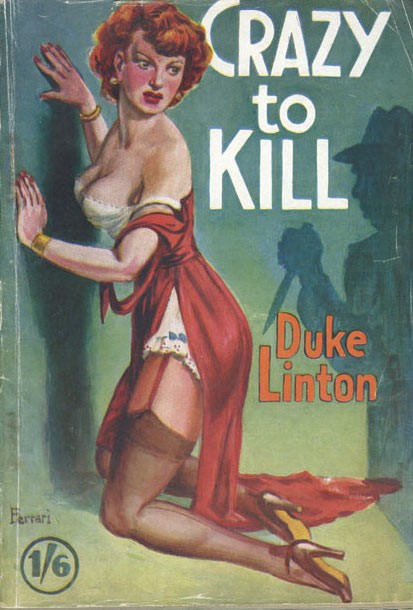

|
 |

The headlines that mattered yesteryear.
1961—Bay of Pigs Invasion Is Launched
A group of CIA financed and trained Cuban refugees lands at the Bay of Pigs in southern Cuba with the aim of ousting Fidel Castro. However, the invasion fails badly and the result is embarrassment for U.S. president John F. Kennedy and a major boost in popularity for Fidel Castro, and also has the effect of pushing him toward the Soviet Union for protection. 1943—First LSD Trip Takes Place
Swiss scientist Albert Hofmann, while working at Sandoz Laboratories in Basel, accidentally absorbs lysergic acid diethylamide, better known as LSD, and thus discovers its psychedelic properties. He had first synthesized the substance five years earlier but hadn't been aware of its effects. He goes on to write scores of articles and books about his creation. 1912—The Titanic Sinks
Two and a half hours after striking an iceberg in the North Atlantic Ocean on its maiden voyage, the British passenger liner RMS Titanic sinks, dragging 1,517 people to their deaths. The number of dead amount to more than fifty percent of the passengers, due mainly to the fact the liner was not equipped with enough lifeboats. 1947—Robinson Breaks Color Line
African-American baseball player Jackie Robinson officially breaks Major League Baseball's color line when he debuts for the Brooklyn Dodgers. Several dark skinned men had played professional baseball around the beginning of the twentieth century, but Robinson was the first to overcome the official segregation policy called—ironically, in retrospect—the "gentleman's agreement".
|

|
|

It's easy. We have an uploader that makes it a snap. Use it to submit your art, text, header, and subhead. Your post can be funny, serious, or anything in between, as long as it's vintage pulp. You'll get a byline and experience the fleeting pride of free authorship. We'll edit your post for typos, but the rest is up to you. Click here to give us your best shot.

|
|
































































































































































































